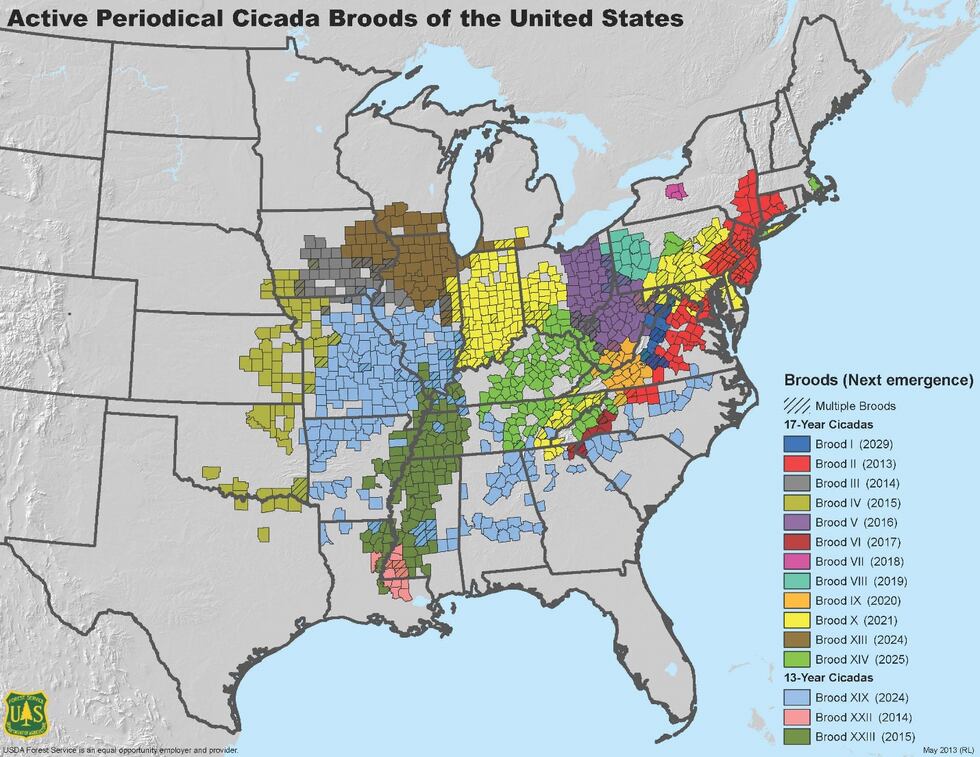More than a trillion cicadas to emerge in rare ‘simultaneous explosion’ this spring
GREENVILLE, S.C. (FOX Carolina) - For the first time in 221 years, Brood XIX and XIII cicadas will co-emerge at the same time.
Periodical cicadas emerge from underground in 13 or 17-year cycles, with different broods co-emerging every five or six years - but they are usually separated geographically. This year is different since the two broods are adjacent to each other and even have a slight overlap.
Brood XIX, the 13-year group known as The Great Southern Brood, stretches across a large swath of the southeastern U.S. and as far north as Illinois. The brood overlaps with the 17-year Brood XIII in the Prairie State.
“If they’re in your area, you’re going to see a lot of pretty large bugs crawling out of the ground,” said Dr. Eric Benson, an entomologist with Clemson University.
The last time the two broods emerged together was in 1803.
“Not since Thomas Jefferson was president has Brood XIX and Brood XIII emerged in the same year,” Benson said. “So we’re going to have cicadas all through the southeast, all up and to the Midwest.”
According to the University of Connecticut, trillions of cicadas will emerge across the U.S. during the event - but not all in the same place at the same time. Overlap in patches of woods in Illinois is possible, however.
“If for 2024 you had the simultaneous explosion of green teenage bugs all across North America on your bingo card, you are in for a treat,” British mathematician Hannah Fry joked on Instagram.
Below is a map of cicada broods in the U.S. and their next emergence:

Cicadas do not bite or sting and pose no threat to humans. However, their signature buzzing can reach 90 decibels and they can damage trees.
Brood XIX last emerged in South Carolina in 2011, sending millions of the cicadas out of the ground in the Upstate. Benson said some areas will see fewer cicadas this time around, though, due to development and deforestation.
State parks and protected forest lands will be prime spots for cicadas in 2024.
“Obviously, I’m a bug nerd, but I think it’s a good thing when they emerge and do their thing and it’s pretty special,” Benson said. “We’re talking about an insect that lives 13 years under the ground and then emerges in the hundreds, the thousands or the millions almost all in the same day, it’s mind-boggling to me.”
Copyright 2024 WHNS. All rights reserved.














